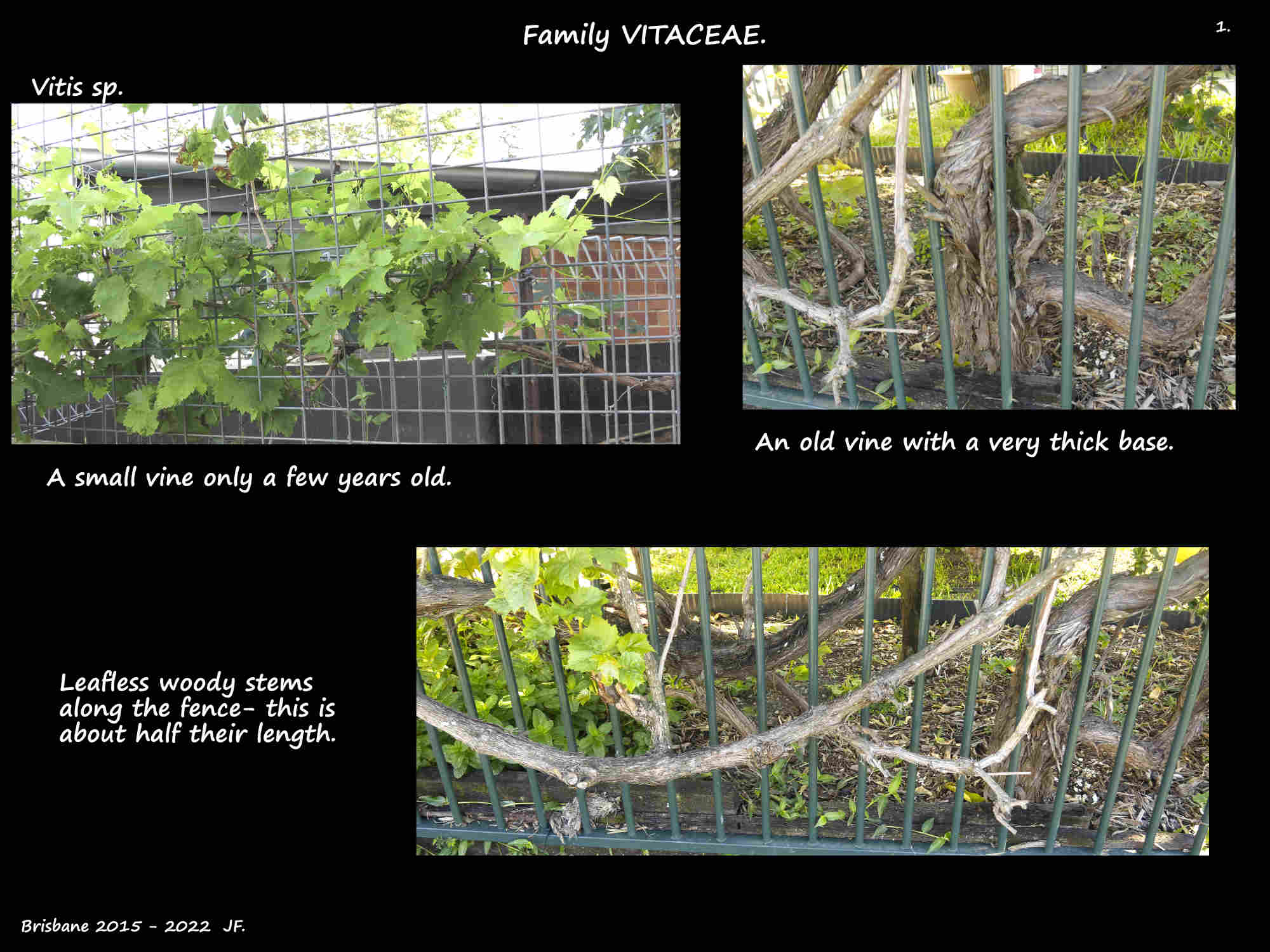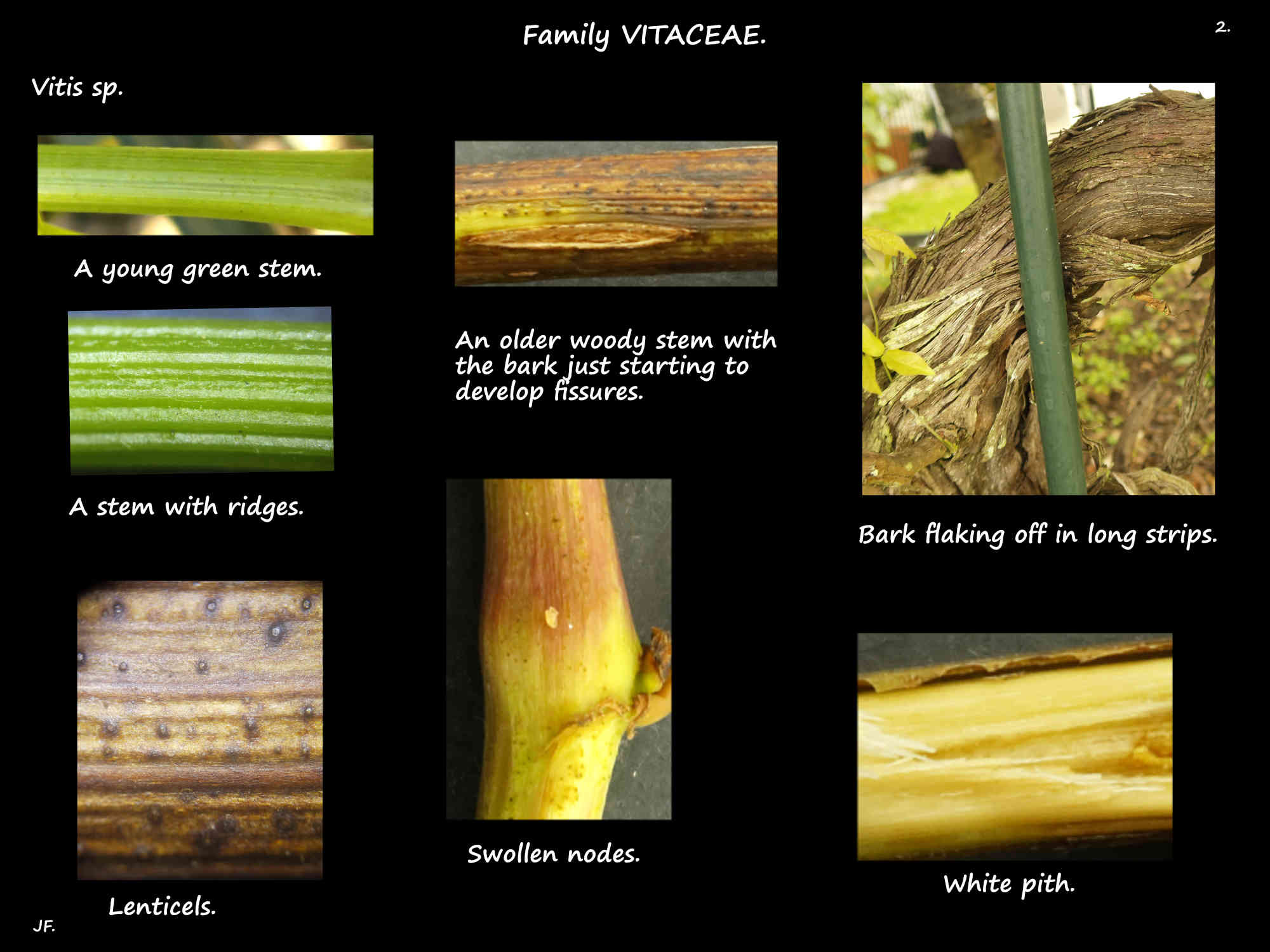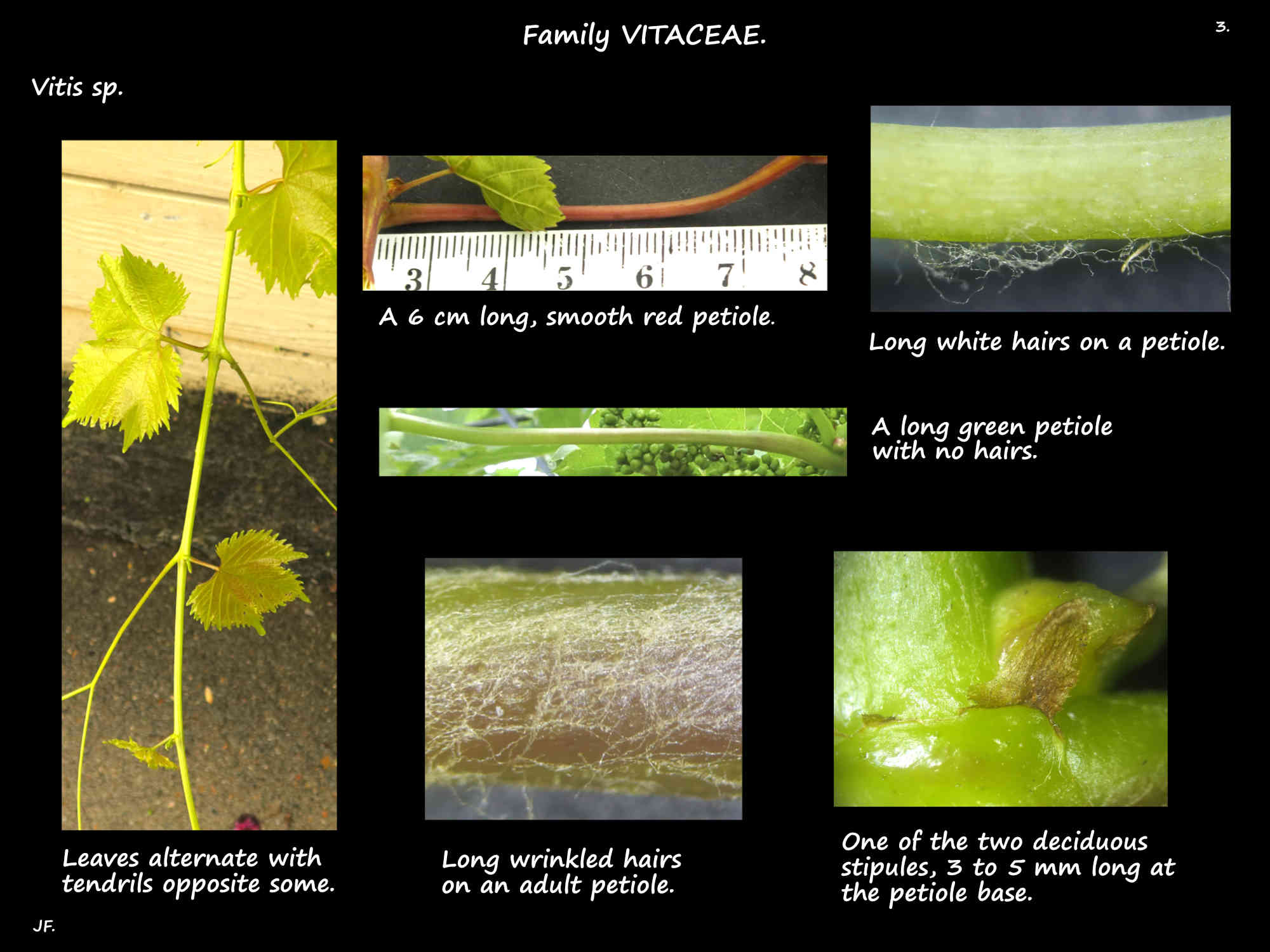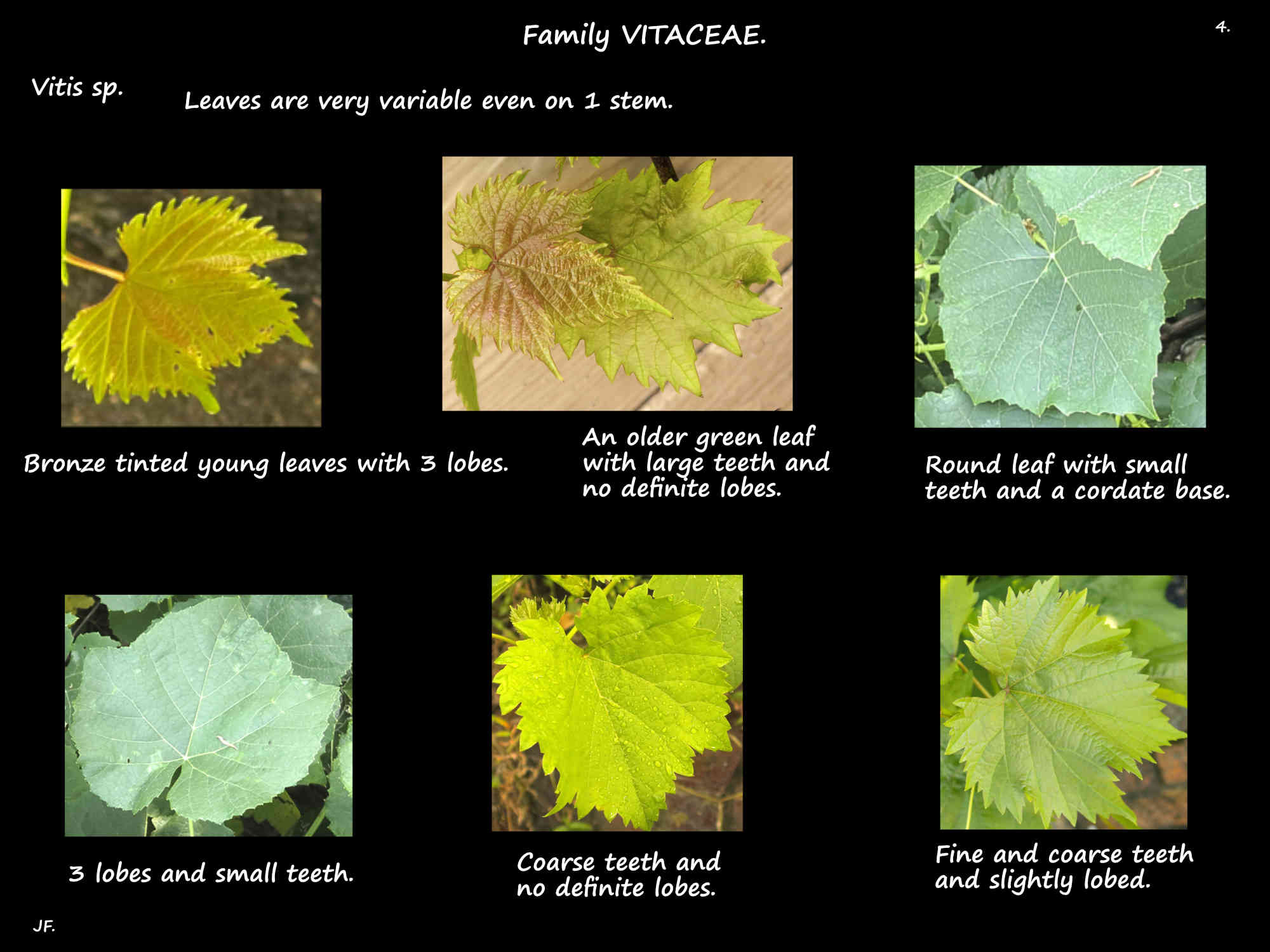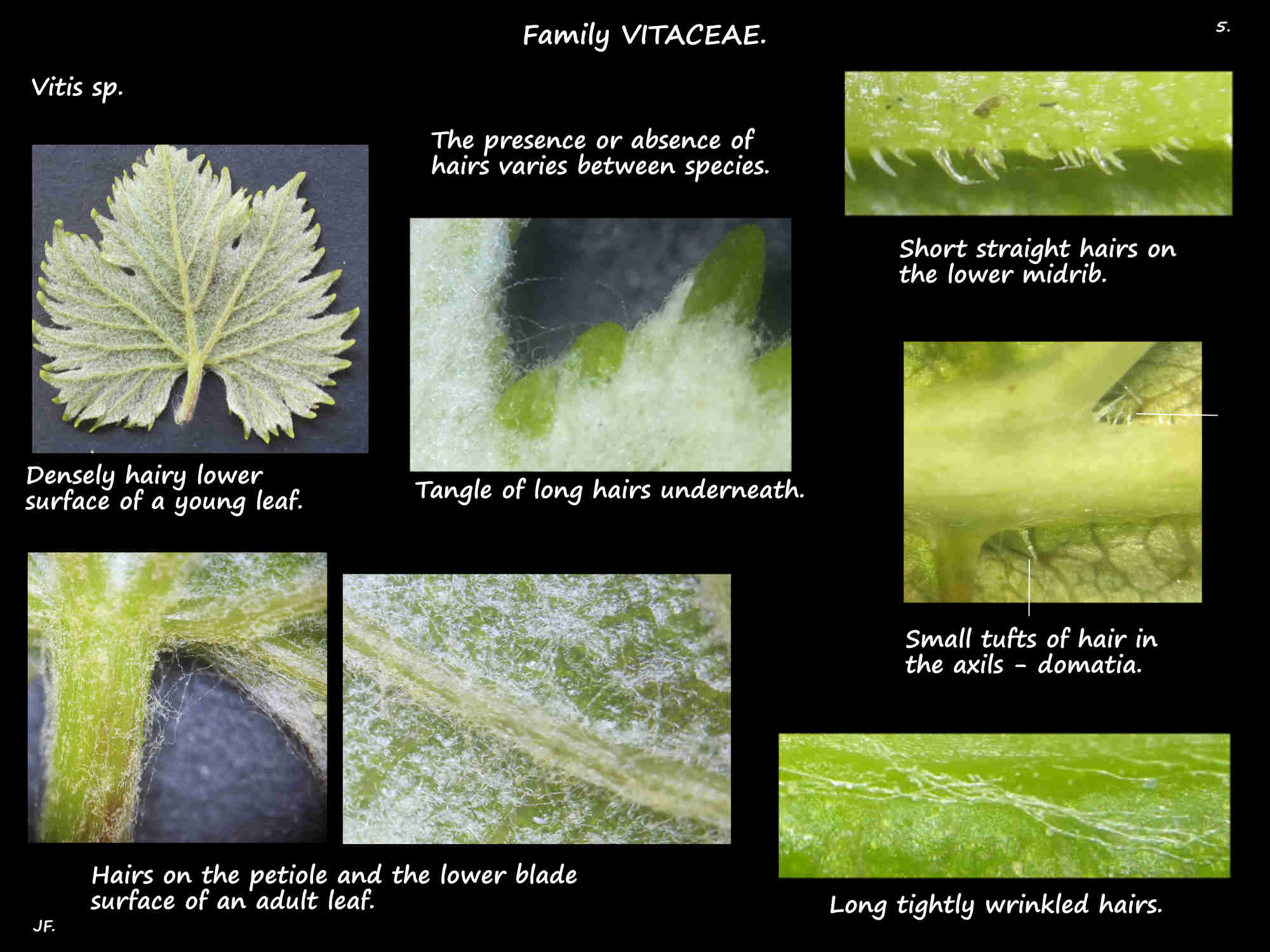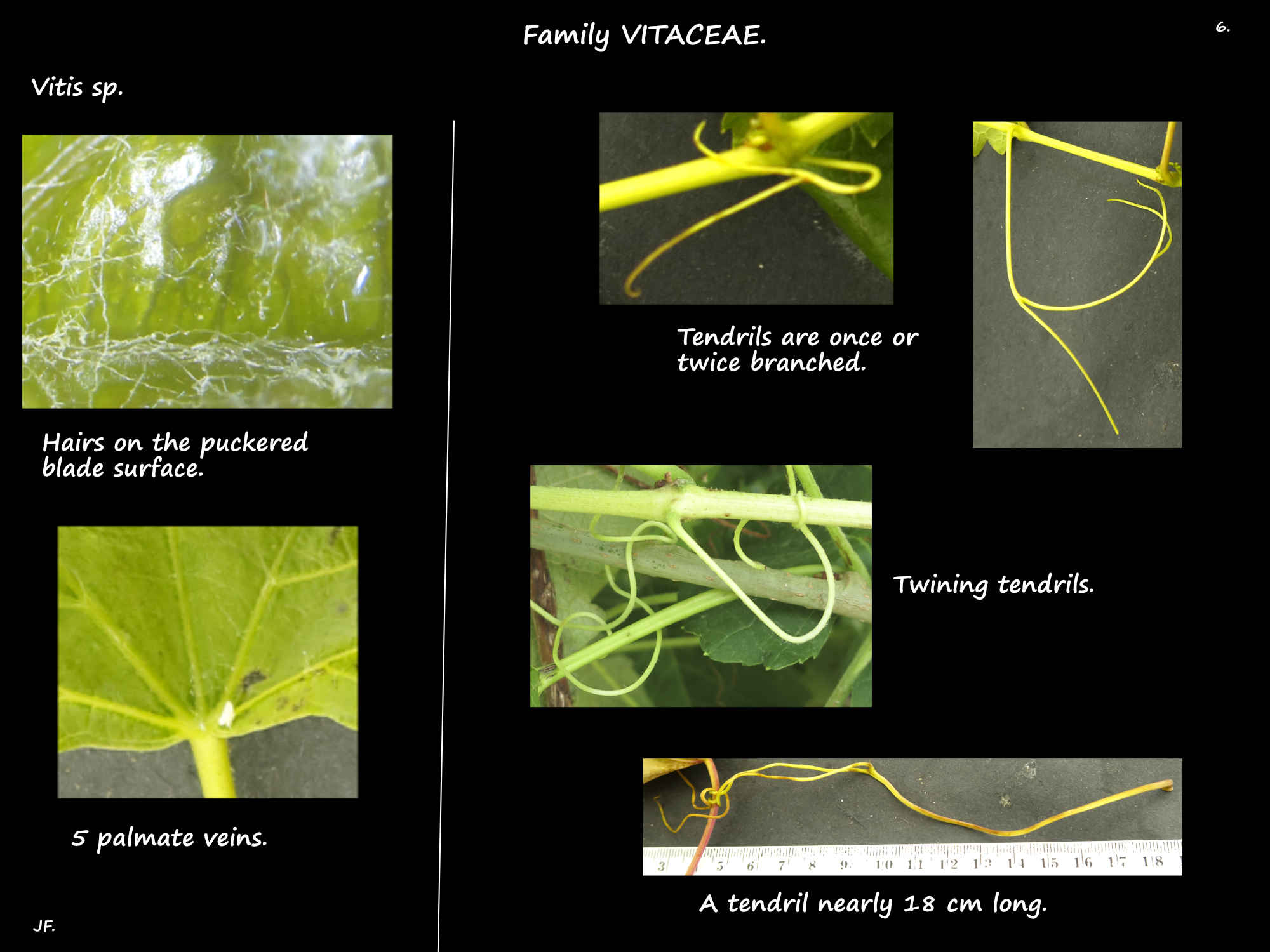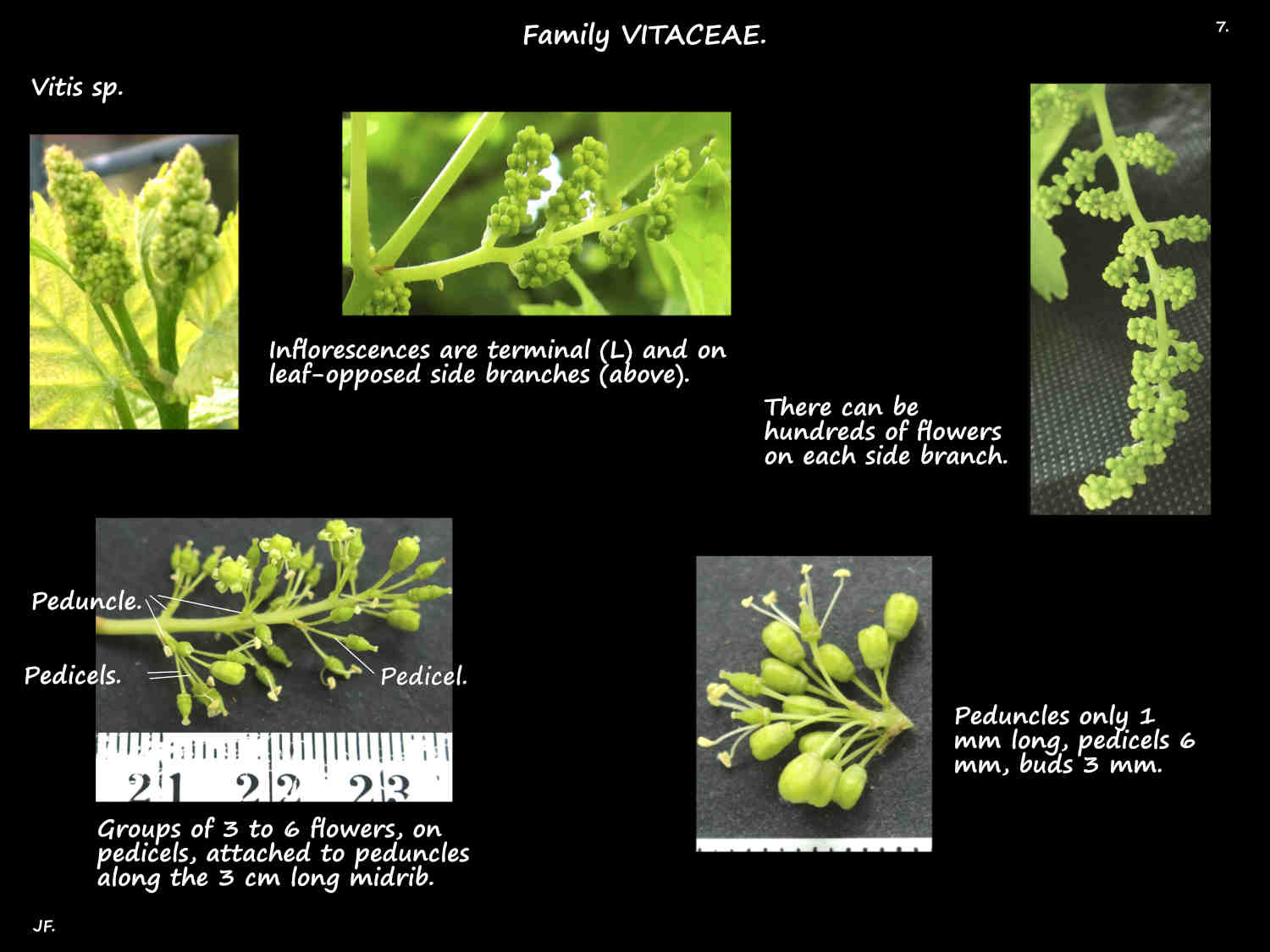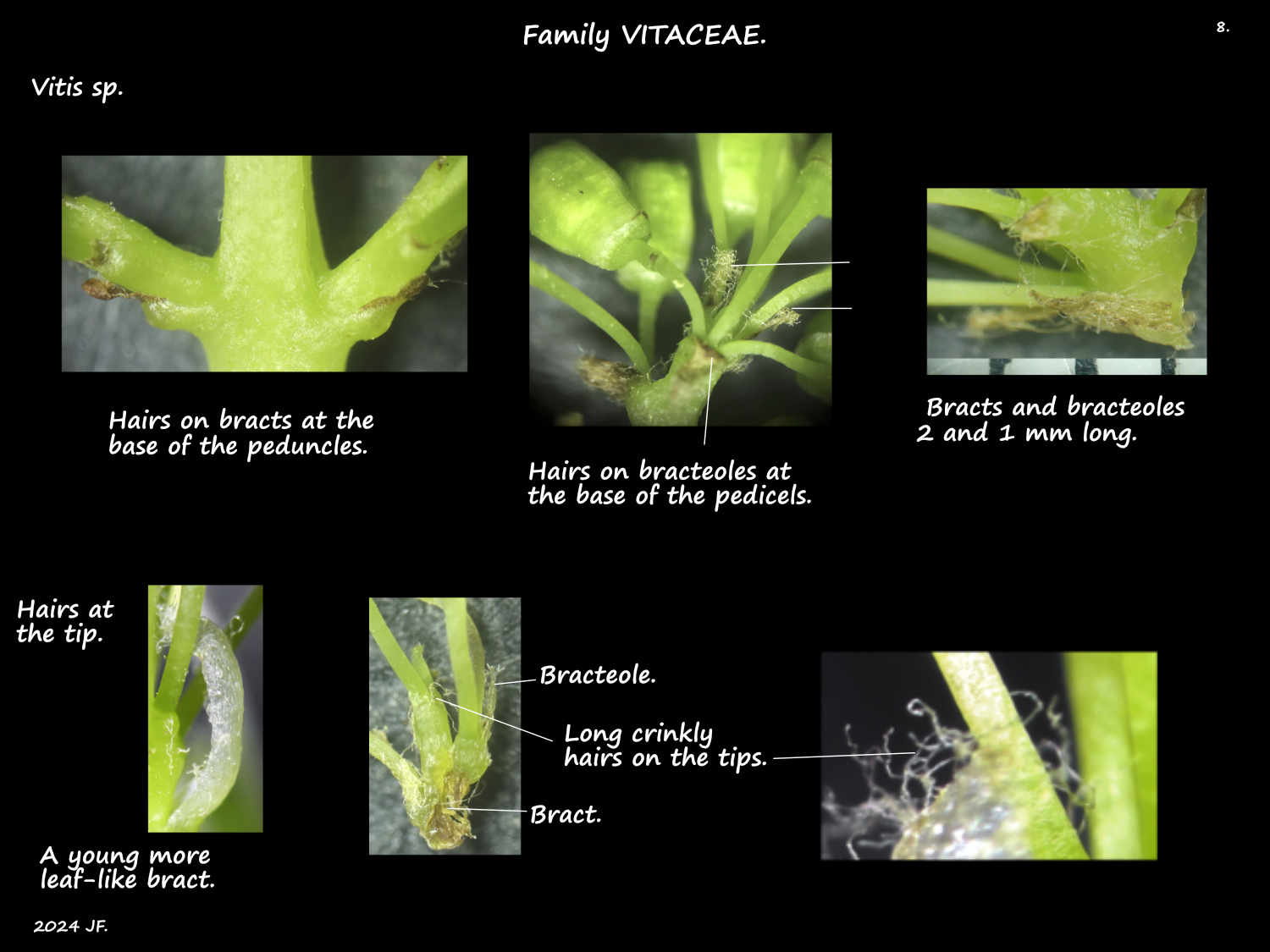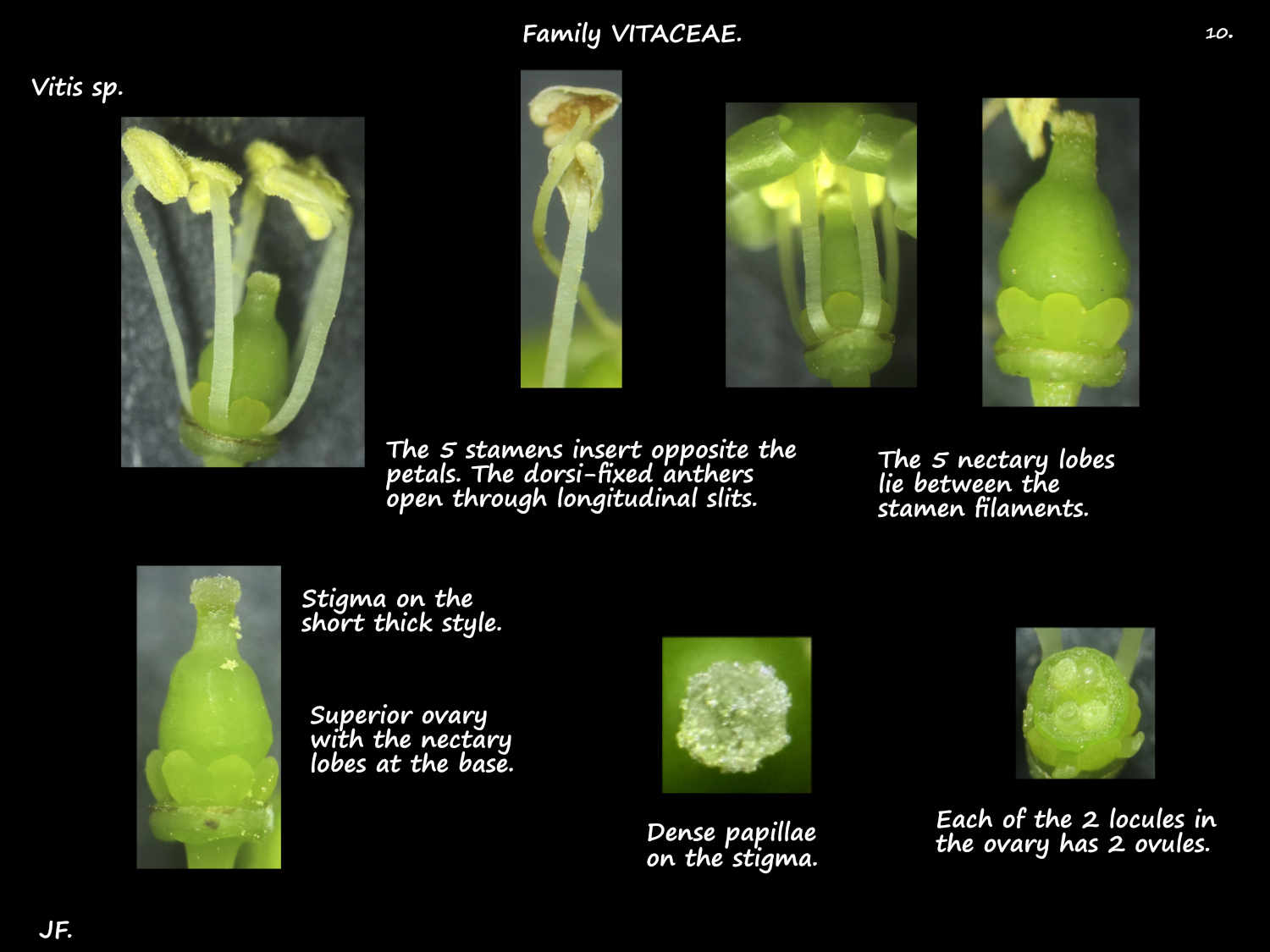Vitis.
Family Vitaceae > Subfamily Vitoideae.
The exact number of species in not known with estimates ranging from 60 to 80.
Most are from North America with some from Asia and the Mediterranean.
There are many hybrids and over 8000 varieties and cultivars.
They are grown for table grapes, wines, dried fruits, juice, jam and garden ornamentals.
Most plants are Vitis vinifera or one of its cultivars.
There is a wide variation in features among the species.
Most are perennial, deciduous, woody vines with stems up to 35 m long.
There are a few multi-stemmed shrubs that may become climbers.
Vines are tendril climbers or scramblers.
Young stems are green and new growth may have a bronze tint.
Older stems are brown and woody with bark that often splits and peels off.
The leaves, on long petioles are alternately arranged.
Even on one branch the leaf shapes can be very different.
They are small or up to 30 cm long.
The blade can be round, kidney- or heart-shaped.
Many have 3, 5 or 7 lobes that are very shallow to deeply incised.
A few are dissected to the midrib and become compound.
The edges have coarse forward pointing teeth.
The blade may be textured or puckered between the 5 main palmate veins.
Young leaves have white or reddish-brown hairs on the lower surface.
The hairs may be diffusely spread or in tufts and most disappear as the leaf grows.
The upper leaf surface may be light or dark green or a silvery-green.
Leaves colour before they fall.
The forked tendrils arise opposite the leaves at some to all of the nodes.
Possibly formed from modified shoots they may sometimes have buds on them.
The do not have adhesive pads on the tips.
Leaf opposed or terminal inflorescences are branched clusters of 10 to over 700 flowers.
The small green or yellowish flowers have parts mostly in fives (3 to 9).
Flowers can be bi- or uni-sexual with cultivated varieties mostly being bisexual.
The calyx is only a narrow collar.
The petals are joined in the bud then as the flower develops the petals separate at the base.
The attached tips form a hood over the anthers.
The tips remain remain attached and all the petals fall off as a unit.
There are usually five (3 to 9) short or long stamens inserted opposite the petals.
In bisexual and staminate flowers the stamens are upright whereas pistillate flowers have
the stamens curved backwards. Pistillate flowers have non-fertile pollen.
The nectiferous disc between the stamens and ovary almost surrounds the filament bases.
It is in the form of 5 (3 to 9) glands.
They are yellow, dark yellow or yellowish-green and may persist in the fruit.
The superior ovary is fully developed in bisexual and pistillate flowers.
Of 2 (3 or 4) carpels there are 2 ovules in each locule.
The style is short and the stigma usually has 2-lobes.
In Vitis vinifera the style is solid and the stigma has dense papillae on it.
The fruit are fleshy, oblong or round berries often with a white bloom.
Mature fruit can be green, red, purple, dark purple (black) or dark blue.
Grapes called ‘white’ are actually green.
Each berry has 1 to 4 (6) seeds around 5 mm long with the shape depending on the species.
The ventral surface has 2 infolds and there is a round or oval chalaza on the dorsal side.
J.F.

